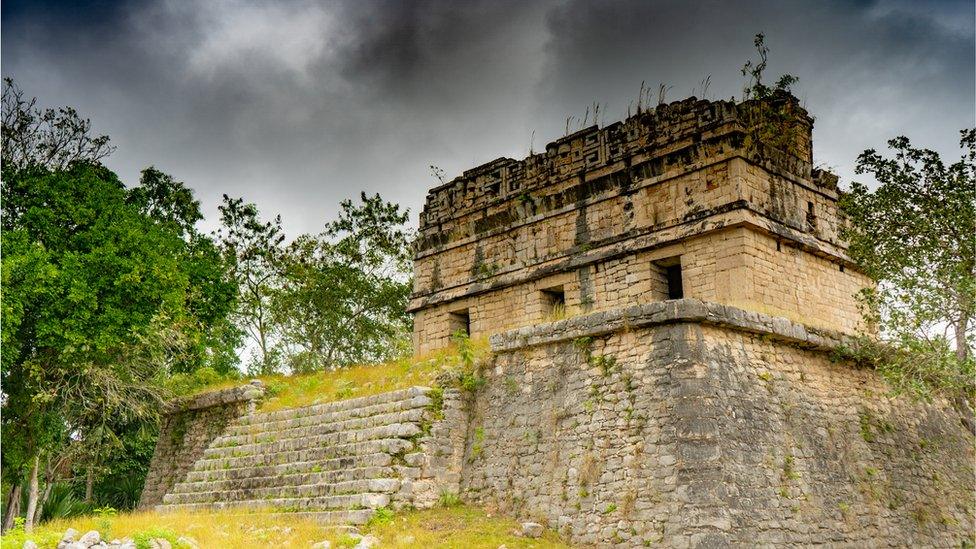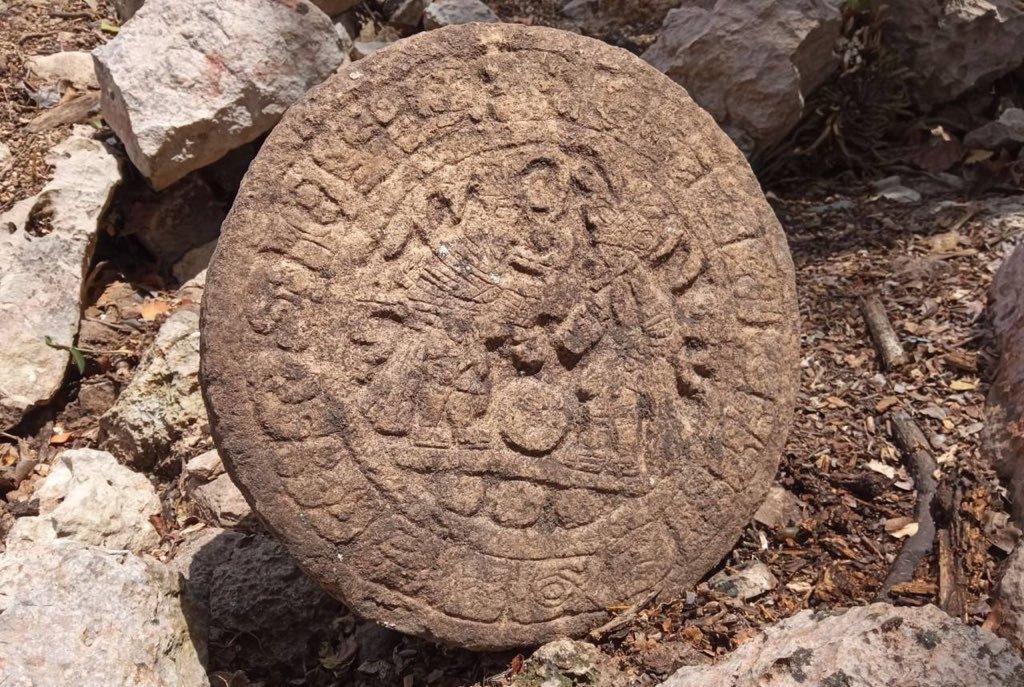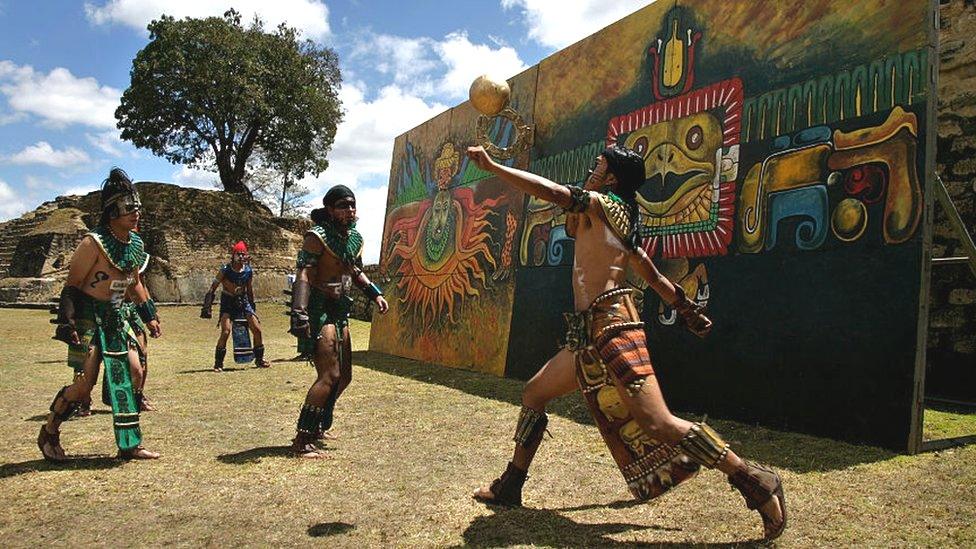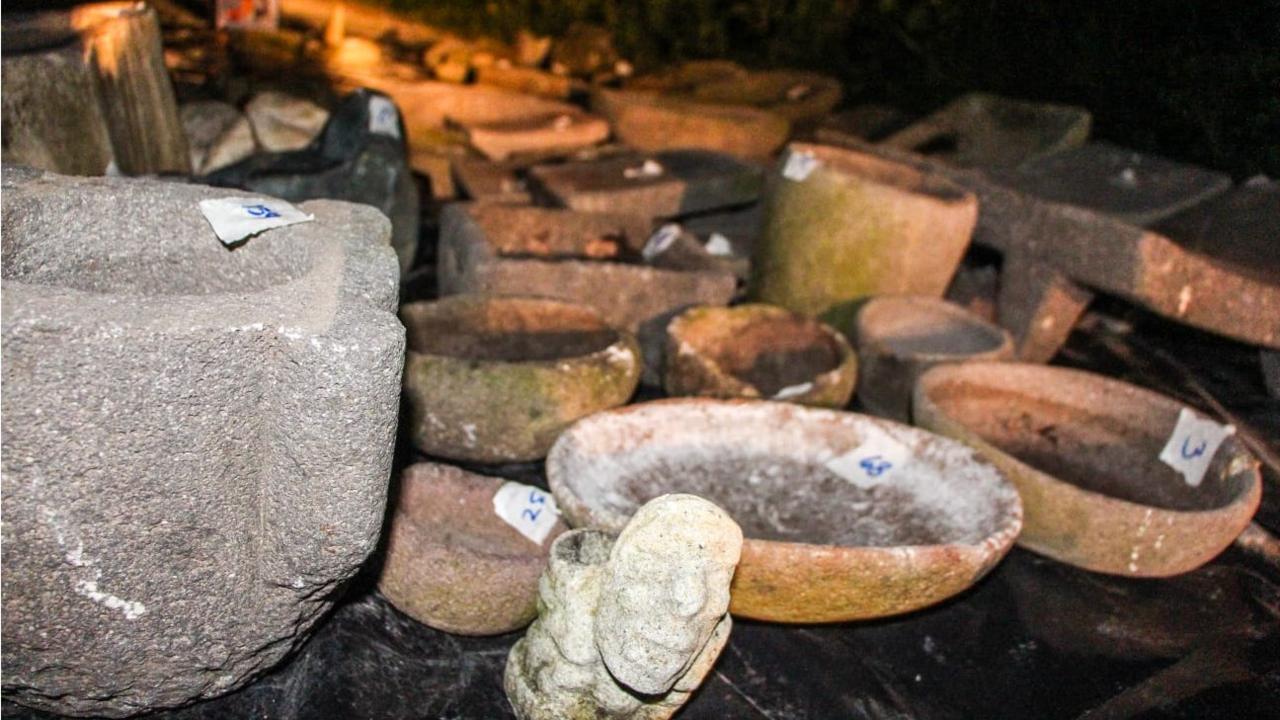Chichen Itza: Archaeologists discover scoreboard for ancient Maya ball game
- Published

The stone has a diameter of 32.5cm (12.8in)
Archaeologists in Mexico have uncovered an intricately carved stone they believe was used as a scoreboard for pelota, a ball game played by the Maya hundreds of years ago.
The circular stone was found at the Chichen Itza archaeological site and is thought to be around 1,200 years old.
At its centre are two players in elaborate headgear surrounded by hieroglyphic writing.
Experts are now analysing the writing to decipher its possible meaning.
The 40kg-stone (88lb) was found by archaeologist Lizbeth Beatriz Mendicut Pérez in an architectonic compound known as Casa Colorada (Red House).

The stone was discovered in the Casa Colorada complex, also known as Chinchanchob
Casa Colorada is the best preserved of the buildings surrounding the main plaza in the pre-Columbian city of Chichen Itza.
Experts believe the stone would have adorned an archway at the entrance to the compound during the late 800s or early 900s.
It was found face down half a metre underground, where it is thought to have fallen when the archway collapsed.

Archaeologists say the stone will give them clues about the life of the Maya
Mexico's National Institute of Anthropology and History (INAH) said the 40kg-stone (88lb) constituted a precious and unusual find.
"It is rare to find hieroglyphic writing at this Maya site, and even rarer to find a complete text. This hasn't happened in 11 years," archaeologist Francisco Pérez Ruiz explained.
A team of experts in iconography, led by Santiago Sobrino Fernández, has identified the two central figures as pelota players, one of whom wears a feather headdress and the other - presumed to be his opponent - wears what is known as a "snake turban".
The man with the snakes slithering around his head also appears to be wearing the protective gear typical of pelota players.
Pelota is a team game played with a heavy ball made from rubber in a ballcourt. It is thought to be 3,000 years old and was played across Mesoamerica.
Related topics
- Published2 August 2022

- Published15 November 2022
